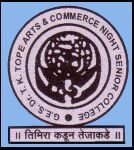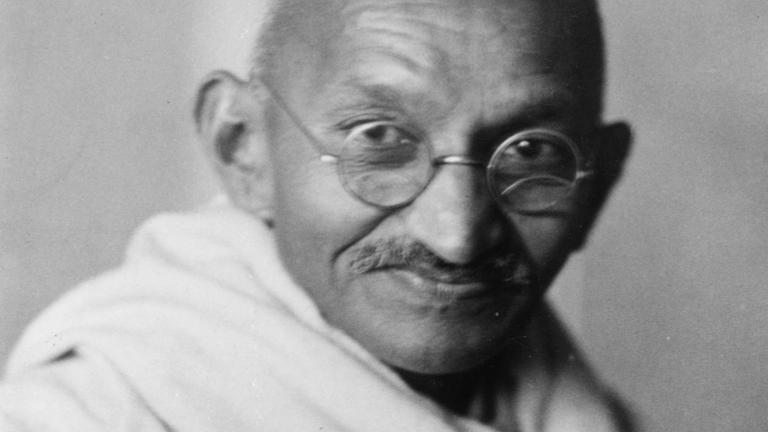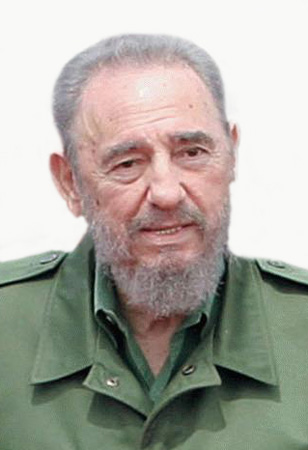महात्मा गांधी
| 1869 | Oct. 2 | Born at Porbandar, Kathiawad, son of Karamchand (Kaba) and Putlibai Gandhi. |
| 1876 | Attended primary school in Rajkot, where his family moved. | |
| 1876 | Betrothed to Kasturba (called Kasturba in her old age), daughter of Gokuldas Makanji, a merchant. | |
| 1881 | Entered high school in Rajkot. | |
| 1883 | Married to Kasturba. (at the age of 14 years) | |
| 1885 | Father died at age of 63. | |
| 1887 | Passed matriculation examination at Ahmedabad and entered Samaldas College, Bhavnagar, Kathiawad, but found studies difficult and remained only one term. | |
| 1888 | First of four sons born. (at the age of 19 years) | |
| 1891 | Sept. | Sailed from Bombay for England to study law. |
| 1891 | Summer. Returned to India after being called to bar. Began practice of law in Bombay and Rajkot. | |
| 1893 | April | Sailed for South Africa to become lawyer for an Indian firm. |
| 1893 | Found himself subjected to all kinds of color discrimination. | |
| 1894 | Prepared to return to India after completing law case, but was persuaded by Indian colony to remain in South Africa and do public work and earn a living as a lawyer. | |
| 1894 | Drafted first petition sent by the Indians to a South African legislature. | |
| 1894 | May | Organised Natal Indian Congress. |
| 1896 | Returned to India for six months to bring back his wife and two children to Natal. | |
| 1896 | Dec. | Sailed for South Africa with family. Was mobbed when he disembarked at Durban for what Europeans thought he wrote about South Africa when he was in India. |
| 1899 | Organised Indian Ambulance Corps for British in Boer War. | |
| 1901 | Embarked with family for India, promising to return to South Africa if Indian community there needed his services again. | |
| 1901 – 1902 | Travelled extensively in India, attended Indian National Congress meeting in Calcutta, and opened law office in Bombay. | |
| 1902 | Returned to South Africa after urgent request from Indian community. | |
| 1903 | Summer. Opened law office in Johannesburg. | |
| 1904 | Established the weekly journal, Indian Opinion. | |
| 1904 | Organised Phoenix Settlement near Durban, after reading Ruskin’s Unto This Last. | |
| 1906 | March | Organised Indian Ambulance Corps for Zulu “Rebellion”. |
| 1906 | Took vow of continence for life. | |
| 1906 | Sept. | First satyagraha campaign began with meeting in Johannesburg in protest against proposed Asiatic ordinance directed against Indian immigrants in Transvaal. |
| 1906 | Oct. | Sailed for England to present Indians’ case to Colonial Secretary and started back to South Africa in December. |
| 1907 | June | Organised satyagraha against compulsory registration of Asians (“The Black Act”). |
| 1908 | Jan. | Stood trial for instigating satyagraha and was sentenced to two months’ imprisonment in Johannesburg jail (his first imprisonment). |
| 1908 | Jan. | Was summoned to consult General Smuts at Pretoria; compromise reached; was released from jail. |
| 1908 | Feb. | Attacked and wounded by Indian extremist, Mir Alam, for reaching settlement with Smuts. |
| 1908 | Aug. | After Smuts broke agreement, second satyagraha campaign began with bonfire of registration certificates. |
| 1908 | Oct. | Arrested for not having certificate, and sentenced to two months’ imprisonment in Volksrust jail. |
| 1909 | Feb. | Sentenced to three months’ imprisonment in Volksrust and Pretoria jails. |
| 1909 | June | Sailed for England again to present Indians’ case. |
| 1909 | Nov. | Returned to South Africa, writing Hind Swaraj en route. |
| 1910 | May | Established Tolstoy Farm near Johannesburg. |
| 1913 | Began penitential fast (one meal a day for more than four months) because of moral lapse of two members of Phoenix Settlement. | |
| 1913 | Sept. | Helped campaign against nullification of marriages not celebrated according to Christian rites, with Kasturba and other women being sentenced for crossing the Transvaal border without permits. |
| 1913 | Nov. | Third satyagraha campaign begun by leading “great march” of 2,000 Indian miners from Newcastle across Transvaal border in Natal. |
| 1913 | Nov. | Arrested three times in four days (at Palmford, Standerton, and Teakworth) and sentenced at Dundee to nine months’ imprisonment; tried at Volksrust in second trial and sentenced to three months’ imprisonment with his European co-workers, Polak and Kallenbach. Imprisoned in Volksrust jail for a few days and then taken to Bloemfontein in Orange Free State. |
| 1913 | Dec. | Released unconditionally in expectation of a compromise settlement, C.F. Andrews and W.W. Pearson having been sent by Indians in India to negotiate. |
| 1914 | Jan. | Underwent fourteen days’ fast for moral lapse of members of Phoenix Settlement. |
| 1914 | Jan. | Satyagraha campaign suspended, with pending agreement between Smuts, C.F. Andrews, and Gandhi, and with ultimate passage of Indian Relief Act. |
| 1914 | July | Left South Africa forever, sailing from Cape town for London with Kasturba and Kallenbach, arriving just at beginning of World War I. |
| 1914 | Organised Indian Ambulance Corps in England, but was obliged to sail for India because of pleurisy. | |
| 1915 | Secured removal of customs harassment of passengers at Viramgam; first incipient satyagraha campaign in India. | |
| 1915 | May | Established Satyagraha Ashram at Kochrab, near Ahmedabad, and soon admitted an untouchable family; in 1917 moved ashram to new site on Sabarmati River. |
| 1916 | Feb. | Gave speech at opening of Hindu University at Benares. |
| 1917 | Helped secure removal of recruiting of South African indenture workers in India. | |
| 1917 | Led successful satyagraha campaign for rights of peasants on indigo plantations in Champaran. Defied an order to leave area in April, was arrest at Motihari and tried, but case was withdrawn. Mahadev Desai joined him at Champaran. | |
| 1918 | Feb. | Led strike of mill workers at Ahmedabad. Mill owner agreed to arbitration after his three-day fast (his first fast in India). |
| 1918 | March | Led satyagraha campaign for peasants in Kheda. |
| 1918 | Attended Viceroy’s War Conference at Delhi and agreed that Indians should be recruited for World War I. | |
| 1918 | Began recruiting campaign, but was taken ill and came near death; agreed to drink goat’s milk and learned spinning during convalescence. | |
| 1919 | Spring. Rowlatt Bills (perpetuating withdrawal of civil liberties for seditious crimes) passed, and first all-India satyagraha campaign conceived. | |
| 1919 | April | Organised nation-wide hartal – suspension of activity for a day – against Rowlatt Bills. |
| 1919 | April | Arrested at Kosi near Delhi on way to Punjab and escorted back to Bombay, but never tried. |
| 1919 | Fasted at Sabarmati for three days in penitence for violence and suspended satyagraha campaign, which he called a “Himalayan miscalculation” because people were not disciplined enough. | |
| 1919 | Assumed editorship of English weekly, Young India, and Gujarati weekly, Navajivan. | |
| 1919 | Oct. | After five months’ refusal, authorities allowed him to visit scene of April disorders in Punjab. Worked closely with Motilal Nehru. Conducted extensive inquiry into violence in many Punjab villages. |
| 1920 | April. | Elected president of All-India Home Rule League. |
| 1920 | June | Successfully urged resolution for a satyagraha campaign of non-cooperation at Moslem Conference at Allahabad and at Congress sessions at Calcutta (Sept.) and Nagpur (Dec.) |
| 1920 | Aug | Second all-India satyagraha campaign began when he gave up Kaisar-i-Hind medal. |
| 1921 | Presided at opening of first shop selling homespun (khadi) in Bombay. | |
| 1921 | Aug. | Presided at bonfire of foreign cloth in Bombay. |
| 1921 | Sept. | Gave up wearing shirt and cap and resolved to wear only a loin-cloth in devotion to homespun cotton and simplicity. |
| 1921 | Nov. | Fasted at Bombay for five days because of communal rioting following visit of Prince of Wales (later Edward VIII and Duke of Windsor). |
| 1921 | Dec. | Mass civil disobedience, with thousands in jail. Gandhi invested with “sole executive authority” on behalf of Congress. |
| 1922 | Feb. | Suspended mass disobedience because of violence at Chauri Chaura and undertook five-day fast of penance at Bardoli. |
| 1922 | March | Arrested at Sabarmati in charge of sedition in Young India. Pleaded guilty in famous |
| 1922 | Statement at the “great trial” in Ahmedabad before Judge Broomfield. Sentenced to six years’ imprisonment in Yeravda jail. | |
| 1923 | Wrote Satyagraha in South Africa and part of his autobiography in prison. | |
| 1924 | Jan. | Was operated on for appendicitis and unconditionally released from prison in February. |
| 1924 | Sept. | Began 21-day “great fast” at Mohammed Ali’s home near Delhi as penance for communal rioting (between Hindus and Moslems), especially at Kohat. |
| 1924 | Dec. | Presided over Congress session at Belgaum as president. |
| 1925 | Nov. | Fasted at Sabarmati for seven days because of misbehaviour of members of ashram. |
| 1925 | Dec. | Announced one-year political silence and immobility at Congress session at Cawnpore. |
| 1927 | No-tax satyagraha campaign launched at Bardoli, led by Sardar Patel. | |
| 1928 | Dec. | Moved compromise resolution at Congress session at Calcutta, calling for complete independence within one year, or else the beginning of another all-Indian satyagraha campaign. |
| 1929 | March | Arrested for burning foreign cloth in Calcutta and fined one rupee. |
| 1929 | Dec. | Congress session at Lahore declared complete independence and a boycott of the legislature and fixed January 26 as National Independence Day. Third all-Indian satyagraha campaign began. |
| 1930 | 12-Mar | Set out from Sabamarti with 79 volunteers on historic salt march 200 miles to sea at Dandi. |
| 1930 | 6-Apr | Broke salt law by picking salt up at seashore as whole world watched. |
| 1930 | May | Arrested by armed policemen at Karadi and imprisoned in Yeravda jail without trial. |
| 1930 | One hundred thousand persons arrested. There was no Congress in December because all leaders were in jail. | |
| 1931 | Jan. | Released unconditionally with 30 other Congress leaders. |
| 1931 | March | Gandhi-Irwin (Viceroy) Pact signed, which ended civil disobedience. |
| 1931 | Aug. | Sailed from Bombay accompanied by Desai, Naidu, Mira, etc., for the second Round Table Conference, arriving in London via Marseilles, where he was met by C.F. Andrews. |
| 1931 | Autumn. Resided at Kingsley Hall in London slums, broadcast to America, visited universities, met celebrities, and attended Round Table Conference sessions. | |
| 1931 | Dec. | Left England for Switzerland, where he met Romain Rolland, and Italy, where he met Mussolini. |
| 1931 | Dec. | Arrived in India. Was authorised by Congress to renew satyagraha campaign (fourth nation-wide effort). |
| 1932 | Jan. | Arrested in Bombay with Sardar Patel and detained without trial at Yeravda prison. |
| 1932 | Sept. 20 | Began “perpetual fast unto death” while in prison in protest of British action giving separate electorates to untouchables. |
| 1932 | Sept. 26 | Concluded “epic fast” with historic cell scene in presence of Tagore after British accepted “Yeravda Pact”. |
| 1932 | Dec. | Joined fast initiated by another prisoner, Appasaheb Patwardhan, against untouchability; but fast ended in two days. |
| 1933 | Began weekly publication of Harijan in place of Young India. | |
| 1933 | 8-May | Began self-purification fast of 21 days against untouchability and was released from prison by government on first day. Fast concluded after 21 days at Poona. |
| 1933 | July | Disbanded Sabarmati ashram, which became centre for removal of untouchability |
| 1933 | Aug | Arrested and imprisoned at Yeravda for four days with 34 members of his ashram. When he refused to leave Yeravda village for Poona, he was sentenced to one year’s imprisonment at Yeravda. |
| 1933 | Aug. 16 | Began fast against refusal of government to grant him permission to work against untouchability while in prison; on fifth day of fast he was removed to Sassoon Hospital; his health was precarious; he was unconditionally released on eighth day. |
| 1933 | Nov. | Began ten-month tour of every province in India to help end untouchability. |
| 1933 | Nov. | Kasturba arrested and imprisoned for sixth time in two years. |
| 1934 | Summer. Three separate attempts made on his life. | |
| 1934 | July | Fasted at Wardha ashram for seven days in penance against intolerance of opponents of the movement against untouchability. |
| 1934 | Oct. | Launched All-India Village Industries Association. |
| 1935 | Health declined; moved to Bombay to recover. | |
| 1936 | Visited Seagon, a village near Wardha in the Central Provinces, and decided to settle there… (This was renamed Sevagram in 1940 and eventually became an ashram for his disciples.) | |
| 1937 | Jan. | Visited Travancore for removal of untouchability. |
| 1938 | Autumn. Tour of Northwest Frontier Province with the Khan Abdul Ghaffar Khan. | |
| 1939 | March | Began fast unto death as part of satyagraha campaign in Rajkot; fast ended four days later when Viceroy appointed as arbitrator. |
| 1940 | Oct. | Launched limited, individual civil-disobedience campaign against Britain’s refusal to allow Indians to express their opinions regarding World War II – 23,000 persons imprisoned within a year. |
| 1942 | Harijan resumed publication after being suspended for 15 months. | |
| 1942 | March | Met Sir Stafford Cripps in New Delhi but called his proposals “a post-dated cheque”; they were ultimately rejected by Congress. |
| 1942 | Aug. | Congress passed “Quit India” resolution – the final nation-wide satyagraha campaign – with Gandhi as leader. |
| 1942 | Aug. 9 | Arrested with other Congress leaders and Kasturba and imprisoned in Aga Khan Palace near Poona, with populace revolting in many parts of India. He began correspondence with Viceroy. |
| 1942 | Aug. | Mahadev Desai, Gandhi’s secretary and intimate, died in Palace. |
| 1943 | Feb. 10 | Began 21-day fast at Aga Khan Palace to end deadlock of negotiations between Viceroy and Indian leaders. |
| 1944 | Feb. 22 | Kasturba died in detention at Aga Khan Palace at age of seventy-four. |
| 1944 | 6-May | After decline in health, was released unconditionally from detention (this was his last imprisonment; he had spent 2338 days in jail during his life time). |
| 1944 | Sept | Important talks with Jinnah of Moslem League in Bombay on Hindu-Moslem unity. |
| 1946 | March | Conferred with British Cabinet Mission in New Delhi. |
| 1946 | Nov. | Began four-month tour of 49 villages in East Bengal to quell communal rioting over Moslem representation in provisional government. |
| 1947 | March. Began tour of Bihar to lessen Hindu-Moslem tensions. | |
| 1947 | March | Began conferences in New Delhi with Viceroy (Lord Mountbatten) in Jinnah. |
| 1947 | May | Opposed Congress decision to accept division of country into India and Pakistan. |
| 1947 | Aug. 15 | Fasted and prayed to combat riots in Calcutta as India was partitioned and granted independence. |
| 1947 | Sept. | Fasted for three days to stop communal violence in Calcutta. |
| 1947 | Sept. | Visited Delhi and environs to stop rioting and to visit camps of refugees (Hindus and Sikhs from the Punjab). |
| 1948 | Jan. 13 | Fasted for five days in Delhi for communal unity. |
| 1948 | Jan. 20 | Bomb exploded in midst of his prayer meeting at Birla House, Delhi. |
| 1948 | Jan. 30 | Assassinated in 78th year at Birla House by Nathuram Vinayak Godse. |
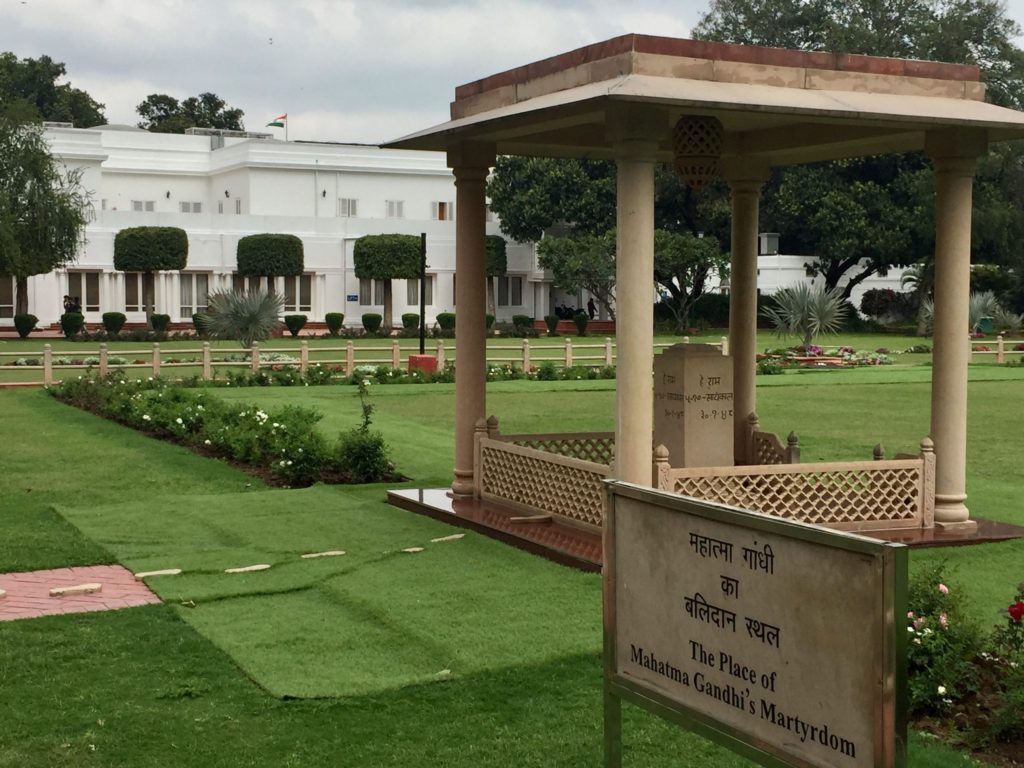
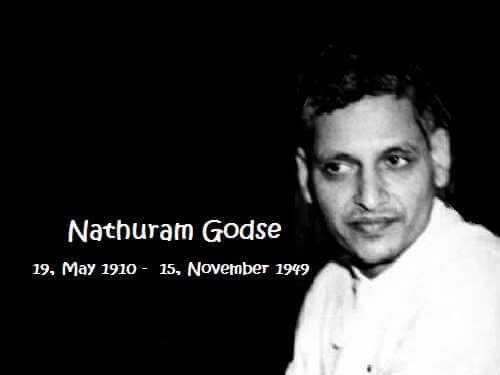
![]()
